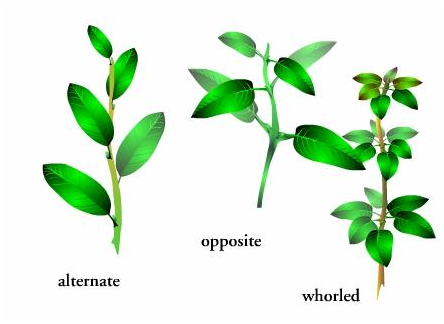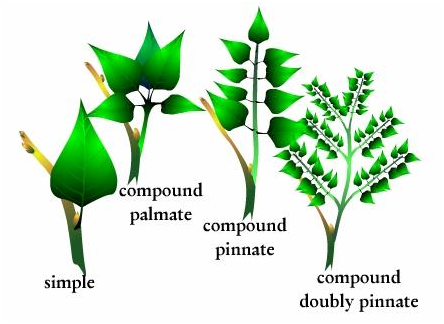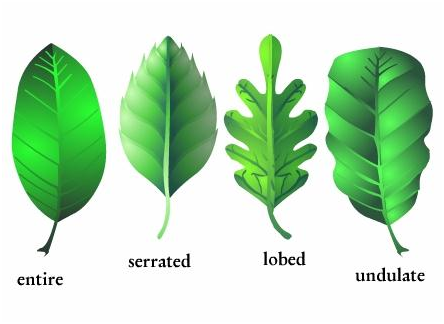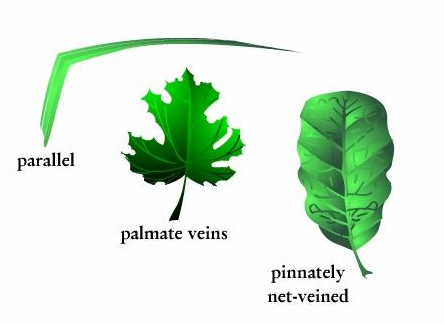What is Leaf Morphology?

Leaf Arrangement : These show the different types of leaf arrangement on a twig. The point on the twig at which the leaves are attached is referred to as a "node." Alternate leaf arrangement is when a single leaf is attached to the stem at a node, and the next adjacent leaf on the stem points in a different direction. If two leaves occur at the same node and are 180 degrees apart, it is called an opposite leaf arrangement. Three or more leaves attached at the same node forms a whorled leaf arrangement.

Compound Leaves : A single leaf on a petiole, or stalk, is called a simple leaf. In many cases, the leaf is divided into sub parts, or leaflets, and these are then called compound leaves. A leaf with its leaflets radiating from one point like the fingers from the palm of your hand is called a palmately compound leaf. If the leaflets are formed in a feather-like fashion, the leaf is called pinnately compound. If the feather-like leaflets themselves are divided into smaller feather like leaflets, the compound leaves are called doubly pinnate.

Leaf Margins : The edges of a leaf blade are referred to as leaf margins. Leaf margins can be highly variable, and come in 4 main types. An entire leaf margin is a margin that has a smooth and unbroken edge. A serrated margin is one that has teeth-like points, a lobed leaf has deep cut indentations, and an undulate leaf edge has gentle, wave like edges.

Leaf Shapes : The shapes of leaf blades is also variable. A lanceolate leaf has the shape of a lance, or spear, blade. Oval and triangular leaf shapes are self-explanatory, and a cordate shaped leaf has the shape of a heart.
Leaf Venation : The veins that serve leaves form fairly typical arrangements, or patterns. Parallel venation is found in monocots, and reticulate, or netted patterns are found in dicots. Palmate leaf venation resembles a pattern formed by fingers radiating from the palm of your hand, and pinnately net venation resembles the pattern found in the pinna of feathers.